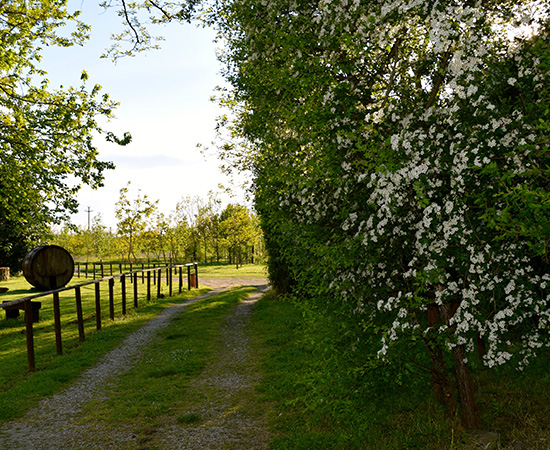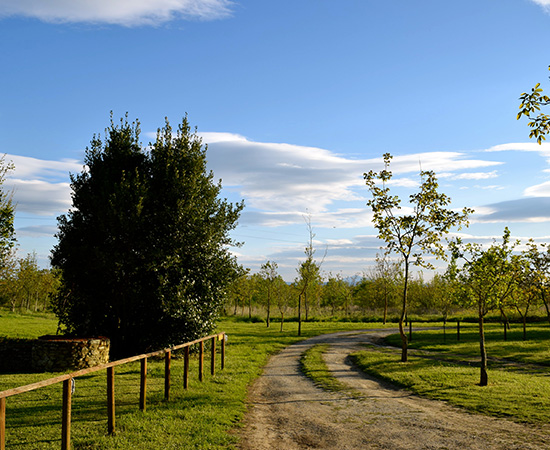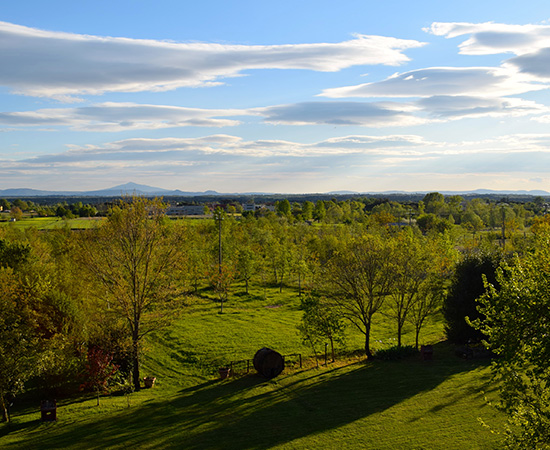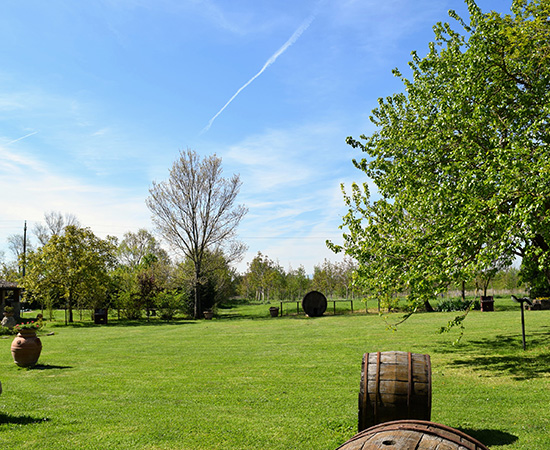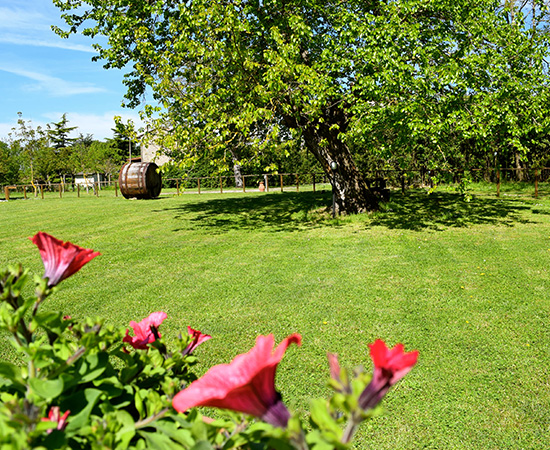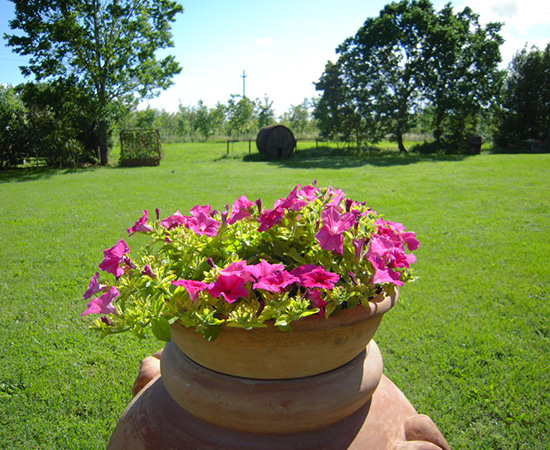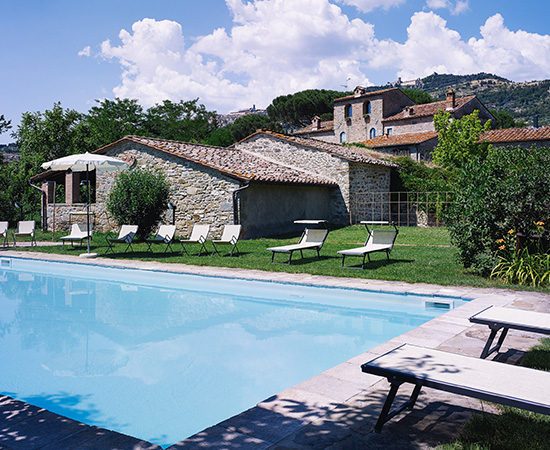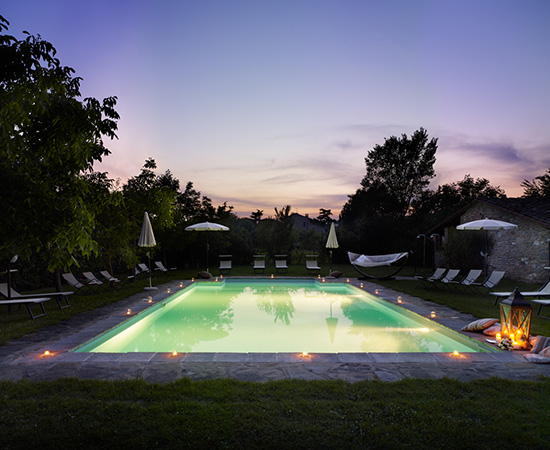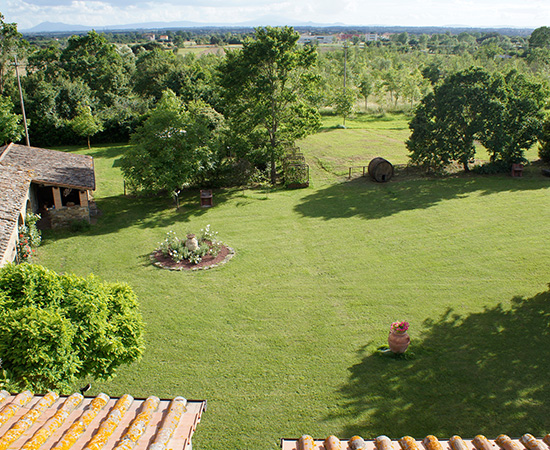Monastero San Silvestro
Park and Swimming Pool
The Park
Monastero San Silvestro is a very old stone house of the fourteenth century, with a large park dominated by a centuries-old mulberry tree white, silent witness to how our countryside the activity of the culture of silkworms had been widespread and source of income until the Second World War. The park contains native plants such as walnuts, alders, oaks, wild hawthorn and many others. In particular, with the renovation of the house, they found new life two old roses and fragrant, which protected the walls of the loggia, are proud to show its vitality, although often their branches annoy guests and must be ticked. Joining the old roses are Judas trees, bushes of lilac, the veronicas, laurel, hawthorn bushes and gentle, lavender and many wild flowers and herbs. In the garden of Monastero San Silvestro still trying to preserve the peace and quiet of the past.
The Swimming Pool
Surrounded by greenery and scents of the park is the swimming pool, the only one of its kind for design and plant engineering. The structure of the pool it is placed inside a garden in order to ensure privacy for guests. In addition, the pool is designed in such a way as to ensure easy access to people with disabilities, the elderly or parents with young children. As for the plant, our pool is not a normal pool chlorine, but a swimming pool with sea salt.
The Advantages
No use of chemicals normally added for disinfection (chlorine, bromine, oxygen, O3) and use of the salt of high quality marine and Dead Sea salts.
The pools with saline to maintain water are still considered an exception, even though in recent years, especially in France and Australia, people began to appreciate the undoubted therapeutic qualities.
The people who consider themselves "allergic" or particularly "sensitive" to chlorine in reality they are often other chemical compounds present in traditional systems of chlorination and sterilization in general.
The average level of chlorine in a pool is usually slightly higher than that found in drinking water in many areas of our country where for particular conditions require a strong precautionary disinfection of the water itself (rural areas).
- Chlorine used to make drinking water is 0.2 ppm (1 ppm = 1 gram per cubic meter of water).
- Chlorine in the pool with air sterilizer saline 0.5-0.8 ppm
- Chlorine in the pool with 2-5 ppm traditional system sterilizer
All the people who are particularly bothered by the presence of chlorine in the pool never manifest the same discomfort in a pool maintained with saline sterilizer.
How it works
The pool water, lightly salted, from a minimum of 4 g / liter to 9 gr / liter, (the sea water is salted to 35 gr / liter), is subjected to the action of the electrolytic cell to produce sodium hypochlorite (NaOCl) which is obtained by the electrochemical reaction of sodium chloride (NaCl, the common salt) with water (H2O).
This reaction is carried out for the passage of current at low voltage which, in cell inserted in the filtration existing, produces a powerful disinfectant and algaecide effect contributing significantly to the reduction of compounds called "chloramines", responsible for the unpleasant odor of "chlorine" present in traditional pools. The use of the device for salt electrolysis, cell equipped with self-cleaning titanium-iridium high efficiency, totally eliminates the need to use chemicals for disinfection and to remove algae.
The addition then a control instrument for pH and / or ORP makes the pool fully automated. The unique and innovative system of pH control with the use of carbon dioxide (CO2), which has bacteriostatic and fungistatic properties, ensures water totally free of chemicals harmful to your skin.
Salts used
For this type of swimming pool, mainly using the Sea Salt, possibly enriched with a proportional amount of Dead Sea salt, to get the most in terms of health benefits from the sterilizing electrolyte, as well as a water quality always unexceptionable.
Main properties of salt
- Has a purifying and detoxifying, it increases the supply of oxygen to the cells remineralizzando the skin and making it radiant and vital.
- Has draining properties and has an adjuvant in the cosmetic treatment of cellulite and water retention in tissues that gives firmness and tone.
- Relieves joint pain and rheumatic reducing muscle stiffness.
- Promotes relaxation and relaxation (bromine), eliminating tension, stress and fatigue.
- Helps improve skin problems such as eczema, psoriasis, etc..
When we speak of salt, we should always refer to the natural sea salt, not table salt which is often simply sodium chloride (NaCl). And it is the largest table salt responsible for higher blood pressure and heart disease. Sea salt is the best form, contains many minerals such as magnesium, calcium, potassium, sodium, chloride, sulfate, phosphate and many other trace minerals.
Sea salt is very good for health and does not raise blood pressure. The salt adds minerals (ionic form) to our food and without minerals can not be healthy. E 'also necessary to maintain the osmotic balance (= osmosis passage of a solvent from a solution at a certain concentration to another solution at higher concentration. Phenomenon important for the control of water distribution in all living organisms), to control pH levels, to help the enzymatic activation. The salt serves as a natural buffer acidity.
Today, unfortunately, almost all of the common table salt is artificial. A comparison of the true salt, rich in more than 90 essential minerals found in the ocean, the industrial refined variety contains only two. It has always been the core subject for power, the "white gold". The sea salt produced in the salt marshes and the salt marshes, belongs to a real collection cycle and therefore constitutes a processing agricultural. And 'in fact need a skilled and patient work can make the best use of what nature provides, such as matter and energy: the sea water, the sun, the wind and the rain. The right combination of these elements was the basis of the success of the harvest, too much sun, too much wind or too
















